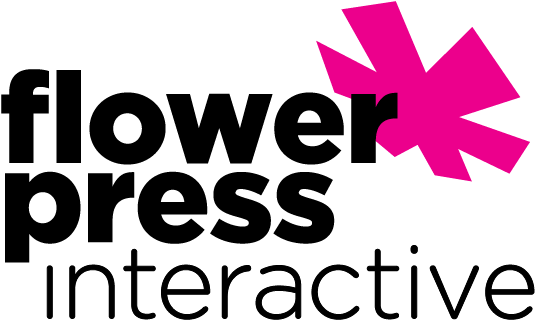
In today’s digital age, creating accessible software is no longer optional—it’s essential. Accessible design ensures that people of all abilities can interact with your product effectively, whether they have visual, auditory, motor, or cognitive impairments. Beyond being a moral imperative, designing for accessibility also broadens your product’s reach and aligns with legal guidelines, like the Web Content Accessibility Guidelines (WCAG). So how can digital product teams build software that’s inclusive and accessible?
Understand User Needs
To design accessible software, you first need to understand the diverse needs of your audience. Users may have various disabilities, from color blindness and hearing impairments to mobility limitations or cognitive challenges. Conduct user research that specifically includes individuals with disabilities. This can help you identify the barriers they face and guide your design approach to remove them.
Key Actions:
- Conduct Accessibility Audits: Evaluate your current product’s accessibility using tools like WAVE, axe, or Lighthouse.
- User Testing with Disabled Individuals: Involve users with disabilities in usability testing to ensure your design addresses their unique challenges.
Follow Established Guidelines
The WCAG provides a set of internationally recognized standards for making web and digital content accessible. These guidelines are organized into four principles: Perceivable, Operable, Understandable, and Robust (often referred to as POUR). Adhering to these principles helps you create software that can be accessed by as many people as possible.
The POUR Principles:
- Perceivable: Ensure that users can perceive your content, whether they are using assistive technologies (e.g., screen readers) or relying on different sensory channels (e.g., audio descriptions).
- Operable: Make sure your product can be used by people with different motor abilities. This could mean keyboard navigation, avoiding time-sensitive actions, or incorporating voice commands.
- Understandable: Content and functionality should be easy to comprehend for all users. Use clear language, provide helpful error messages, and ensure predictable interactions.
- Robust: Your software should work across different platforms, devices, and assistive technologies, ensuring compatibility with future tech developments.
Design with Accessibility in Mind from the Start
Accessibility shouldn’t be an afterthought. Instead, bake it into the design process right from the beginning. Create wireframes and prototypes with accessibility features like keyboard navigation, alternative text for images, and appropriate contrast ratios.
Key Areas to Focus On:
- Color Contrast: Ensure text is readable by maintaining a high contrast between the background and text. Tools like Contrast Checker can help you verify compliance.
- Keyboard Navigation: Users with mobility impairments often rely on the keyboard to navigate. Test your software to ensure all interactive elements (buttons, forms, etc.) can be accessed without a mouse.
- Alt Text for Images: Provide descriptive alternative text for all non-decorative images, enabling screen reader users to understand visual content.
- Font and Text Size: Use scalable fonts that can be adjusted by users without breaking the layout, and ensure that text is legible at various sizes.
Utilize Accessible Development Practices
Once you have an accessible design, it’s crucial to implement it using accessible development practices. Developers should ensure that all UI components are correctly coded to support assistive technologies.
Development Best Practices:
- Semantic HTML: Use proper HTML elements like <button>, <header>, and <nav>, which are inherently more accessible to screen readers than non-semantic elements like <div> or <span>.
- ARIA Landmarks: Where necessary, use ARIA (Accessible Rich Internet Applications) attributes to enhance accessibility for custom components, such as dropdowns or sliders.
- Error Prevention and Handling: Implement clear error messages with guidance on how to resolve issues, and provide alternative input methods for complex actions like CAPTCHA.
Test Your Software for Accessibility
Testing is an essential phase to identify accessibility gaps. Automated tools can catch many common issues, but manual testing is equally important to ensure a well-rounded accessibility check.
Testing Approaches:
- Automated Tools: Use accessibility testing tools like Lighthouse or axe to scan for accessibility violations. These tools highlight potential issues such as missing alt text, improper heading structure, or poor contrast ratios.
- Manual Testing: Conduct keyboard-only navigation tests and use screen readers (like NVDA or VoiceOver) to manually test the user experience. This helps you identify real-world accessibility issues that automated tools might miss.
- User Testing with Disabled Individuals: Involving users with disabilities ensures you’re addressing their specific needs and challenges in the final product.
Iterate and Improve
Accessibility is not a one-time effort; it’s an ongoing process. As new features are added and the product evolves, regular accessibility reviews should be integrated into the development cycle.
Strategies for Continuous Improvement:
- Accessibility Audits: Perform periodic accessibility audits to ensure ongoing compliance with guidelines and user needs.
- User Feedback: Actively seek feedback from users with disabilities and adjust your design and functionality accordingly.
- Training and Awareness: Keep your design and development teams up to date with the latest accessibility standards and tools.
Designing for accessibility is about more than just compliance—it’s about empathy, inclusivity, and creating a product that everyone can enjoy. By making your software accessible, you not only expand your user base but also create a better overall experience for all users. Remember, accessibility isn’t a checkbox to tick—it’s an essential part of the product development journey.
Incorporating accessibility from the start will set you apart, showing your commitment to inclusivity while enhancing the usability and effectiveness of your product.

